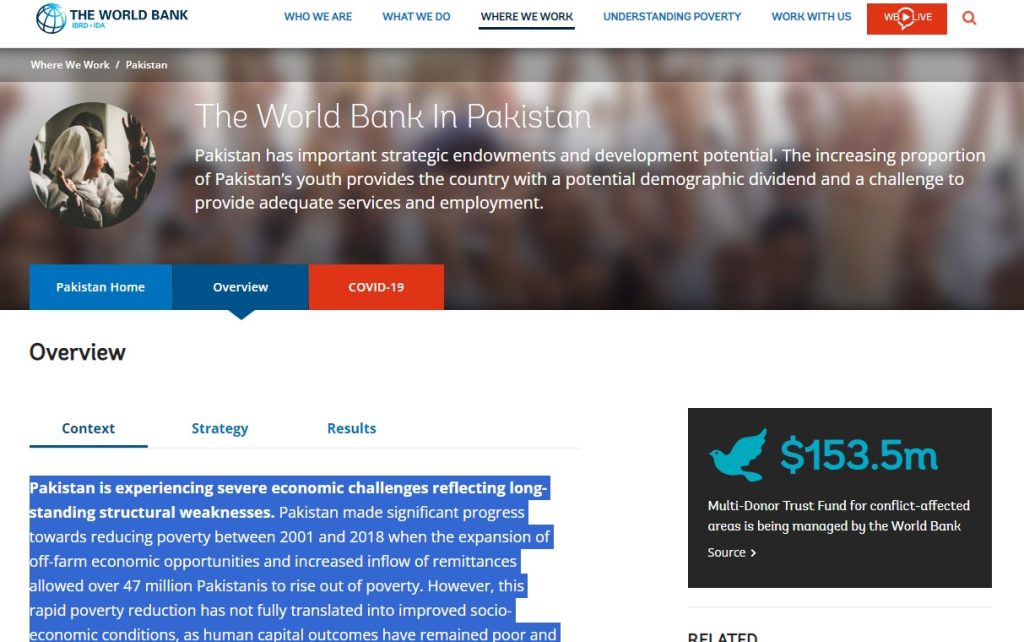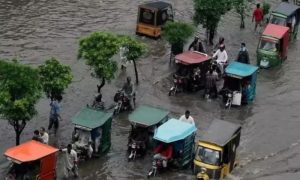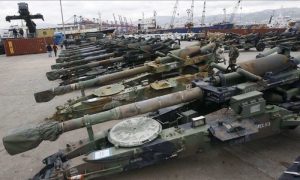World Bank’s Recent View on Pakistan Economy
Pakistan undergoing severe economic challenges emanating from long-standing structural weaknesses. Pakistan made noteworthy advance towards diminishing destitution between 2001 and 2018 when the development of off-farm financial openings and expanded influx of settlements permitted over 47 million Pakistanis to rise out of destitution. Be that as it may, this quick destitution diminishment has not completely deciphered into progressed socio-economic conditions, as human capital results have remained destitute and stagnant, with tall levels of hindering at 38 percent and learning destitution at 75 percent. In expansion, reflecting a consumption-driven development demonstrate, with constrained productivity-enhancing speculation and sends out, solid financial development regularly comes at a fetched of financial lopsided characteristics and visit macroeconomic emergencies. Long-term development of genuine net household item (GDP) per capita subsequently has been moo, averaging as it were around 2.2 percent yearly over 2000-22.
A severe stress is seen currently in Pakistan’s economy with low foreign reserves, high inflation and a continuously depreciating currency. With high public consumption, economic growth rose substantially above potential in FY22, leading to strong pressures on domestic prices, the external and fiscal sectors, the exchange rate, and foreign exchange reserves. These imbalances have been exacerbated by catastrophic flooding in 2022, a surge in global commodity prices, tightening global financing conditions and domestic political uncertainty. In addition, unpredictable disrupting policy implementation, including a period of informal foreign exchange rate restraints and strict import controls, postponed the IMF-EFF program. This contributed to low creditworthiness, drop in confidence, high rate of yields and huge interest payments, and lack of access to foreign capital markets.
As the policy tightening is introduced, with factors like flood impacts, import controls, high borrowing and fuel costs, low confidence, and protracted policy and political uncertainty – Economic activity has largely squeezed. The devastating floods, alongside problems in securing first-rate fertilizers and animal feed, have decreased agricultural output and exertions opportunities for low-income people. further, dwindling foreign reserves, import restrictions, flood influences, high gas fees, policy uncertainty, and the slowdown in home and international call for have affected enterprise and provider area activity. With the destruction of infrastructure and disrupted get admission to colleges, medical facilities, and sanitation systems, the floods have negatively impacted fitness and training effects mainly for rural regions, potentially affecting long-term human capital accumulation.
Economic growth is estimated to fall behind the targets with slower pace and likely to stay below potential in medium-term framework.
Real GDP growth is expected to slow to 0.4% in fiscal 2023, reflecting factors such as tight
monetary policy, flood effects, high inflation, high energy prices pressure and business management. For the first time in more than 20 years, crops are expected to fall due to flooding. The equity market is also expected to decline due to the impact of commodity prices, weak confidence, rising borrowing costs and oil prices, and increased uncertainty. The decline in the game should be reflected in wholesale and shipping services as well as the growth of manufacturing services.
Based on the success of the IMF program and good macroeconomic management, output is expected to recover gradually in 2024 and FY25, but remains below due to the low exchange rate. Country and trade management are also affecting growth. Without additional spending, the low- and middle-income poverty rate is projected to rise to 37.2 percent in fiscal 2023. Given their reliance on agriculture and small-scale manufacturing and construction, poor families remain vulnerable to economic and security problems.
To keep maintaining macroeconomic stabilization has become a difficult policy challenge for the Government. The economic outlook hinges upon timely and full implementation of political reforms with very high downside risks. The enforcement of macro-stabilization policy framework steps and structural reforms backed by the IMF-EFF program is essential to introduce much-needed foreign refinancing and new likely payments from regional friendly nations. Maintaining stability and sustained recovery will require the development, communication and effective implementation of a bold reform strategy, including: (i) adherence to a flexible market-determined exchange rate and sound fiscal and monetary policies; ii) increased domestic revenue mobilization; iii) limiting and improving the quality of public spending; (iv) structural reforms to improve investment, competitiveness and productivity; and v) urgent measures to restore the financial viability of the energy sector.
Click Herre to review Complete Reports.


























